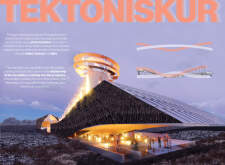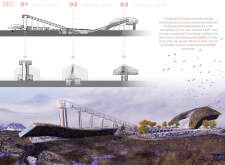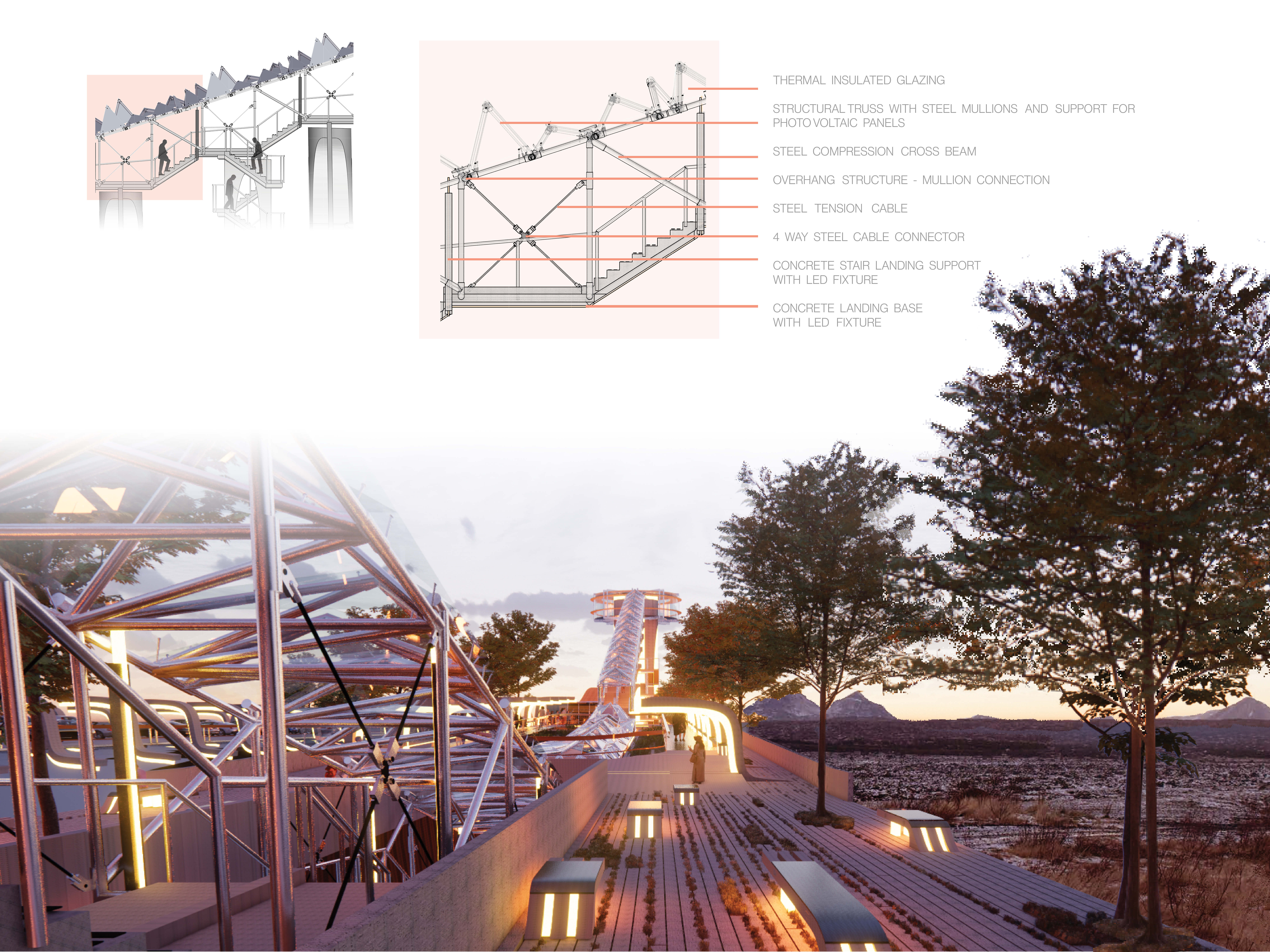5 key facts about this project
The site in Iceland has been shaped by its unique geological features, particularly the active plate tectonics that play a significant role in the landscape. The design reflects a deep understanding of the natural environment and incorporates spaces for visitors and researchers alike. The overall concept aims to create an engaging experience that connects people with the stunning surroundings while promoting well-being through its spatial arrangement.
Dynamic Spatial Relationships
The arrangement of the building focuses on creating meaningful connections between different areas. By thoughtfully fragmenting the structure, it reflects the natural shifts and movements found within the landscape. Circulation paths are carefully planned, allowing for both vertical and horizontal movement that contrasts with the site’s flat characteristics. The design includes stairs that encourage movement, integrating activity into the daily experiences of visitors and staff.
Health and Accessibility Considerations
The remoteness of the site influences the design's approach to health and mobility. Regular use of the stairs is encouraged, establishing a routine that promotes physical activity and well-being. To accommodate all users, ground pathways are designed to meet accessibility standards, ensuring that everyone can navigate the space easily. This focus on health and inclusivity aligns with current design practices that prioritize user experience.
Material Selection and Sustainability
Materials for the structure are chosen for their practicality and environmental benefits. The use of thermal insulated glazing helps optimize energy use, while a steel truss system and mullions support incorporated photovoltaic panels, allowing for the use of renewable energy. Concrete elements, such as stair supports and bases with LED fixtures, provide durability and efficient lighting.
Additionally, the design incorporates features for sustainability, including rainwater harvesting systems and local vegetation, reinforcing the commitment to ecological harmony. The dynamic interaction between light and shadow across the building's surfaces enhances the visual appeal while fostering a sense of connection to the landscape.






















































